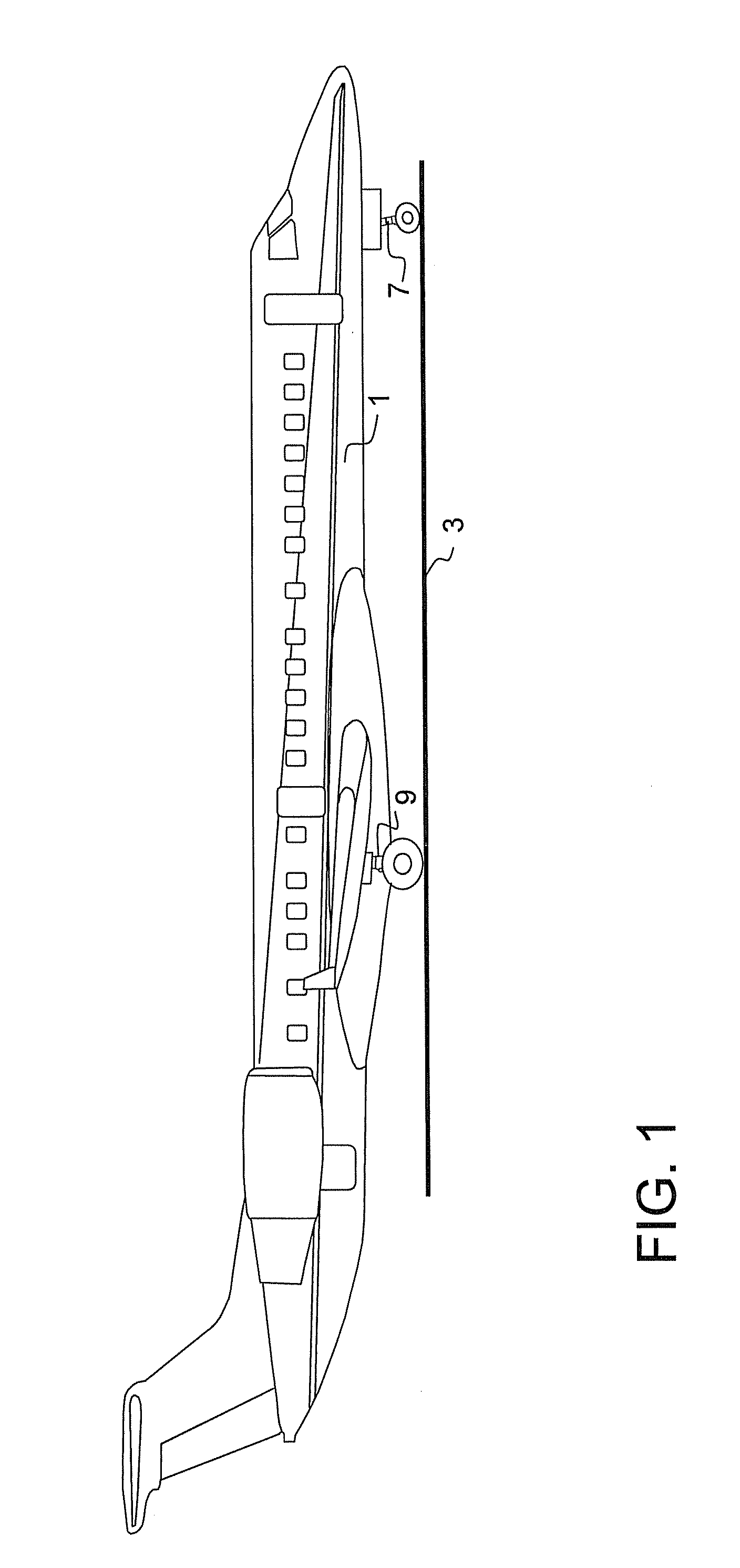Method to Increase Aircraft Maximum Landing Weight Limitation
a maximum landing weight and aircraft technology, applied in vehicle position/course/altitude control, process and machine control, instruments, etc., can solve the problems of limiting the planned load, overweight landing event, severe storm passing through the area,
- Summary
- Abstract
- Description
- Claims
- Application Information
AI Technical Summary
Benefits of technology
Problems solved by technology
Method used
Image
Examples
embodiment
Preferred Embodiment
[0072]The present invention creates a “justification basis” for a Regulatory Authority to allow for a reduction in the current regulatory assumptions of aircraft sink-speed or VVG, by use of measured VVG, to further allow an increase in the MLW limitation of the aircraft. The present invention incorporates devices which measure and determine aircraft sink-speed through various methods including the compression rate experienced by each landing gear strut on initial contact with the ground. The strut is monitored for compression so as to confirm that the aircraft has come into contact with the ground and also to determine the rate of strut compression and the aircraft vertical descent velocity or VVG.
[0073]The present invention detects initial and continued compression of the landing gear strut by rapidly monitoring angle changes in landing gear torque-link, and / or internal strut pressure, prior to initial contact with the ground; as well as throughout the remainde...
PUM
 Login to View More
Login to View More Abstract
Description
Claims
Application Information
 Login to View More
Login to View More - R&D
- Intellectual Property
- Life Sciences
- Materials
- Tech Scout
- Unparalleled Data Quality
- Higher Quality Content
- 60% Fewer Hallucinations
Browse by: Latest US Patents, China's latest patents, Technical Efficacy Thesaurus, Application Domain, Technology Topic, Popular Technical Reports.
© 2025 PatSnap. All rights reserved.Legal|Privacy policy|Modern Slavery Act Transparency Statement|Sitemap|About US| Contact US: help@patsnap.com



